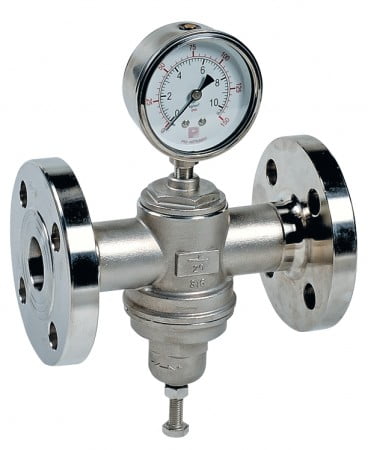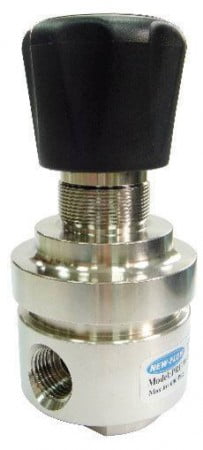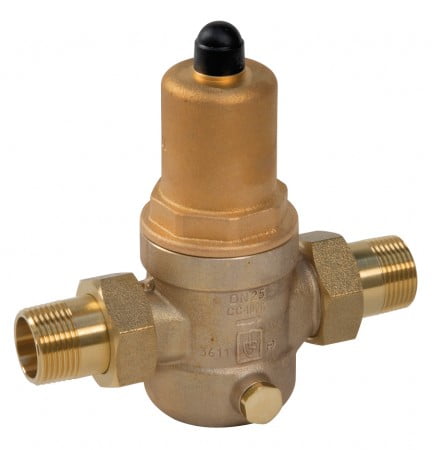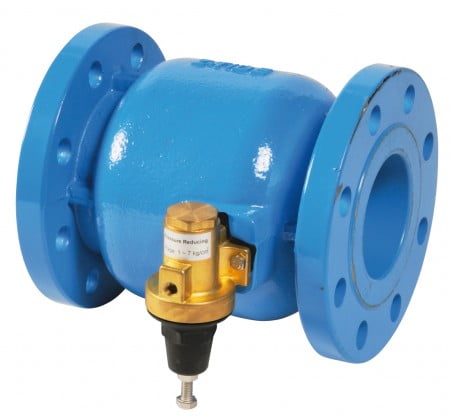Pressure reducers and relief valves
Pressure regulators are hydraulic system components used to reduce the outlet pressure to the desired level. They are mainly used in domestic water installations – this is because in such systems the pressure cannot exceed 3 bars, to ensure the safety of both the installation itself and the users.
Pressure regulators
Products of this type are available in various types – the most commonly encountered solutions are bottle regulators, threaded network regulators, those with flanged connections, and those designed for serial mounting. When choosing a pressure regulator, several important issues should be considered. One of them is the intended use of the purchased component. Depending on the needs of the installation, the shape and operating parameters of the regulator are selected to ensure efficient operation and complete safety. Solutions such as water pressure regulators or air pressure regulators must also be adapted to the characteristics of the working fluid.
A pressure regulator intended for use with air is particularly commonly used in industry, where it is used in pneumatic installations. In the case of such systems, automation tightly controls the operation of the system. To effectively utilize the regulator, simply set the appropriate value on the pressure gauge, and then the device will automatically adjust the current pressure. A water pressure regulator, on the other hand, is suitable for domestic installations, for example, in systems supplying drinking water.
How to choose a pressure regualtor
When purchasing a pressure regulator, it will be necessary to check a range of different features of the product. First and foremost is the material from which the body is made – it should be characterized by high mechanical strength and corrosion resistance. In most cases, brass regulators will be a suitable choice, but proposals made of stainless steel will also perform well. The next step should be to determine the appropriate size, which should be adjusted to the dimensions of the pipes. In GTM’s offer, you can find regulators with dimensions ranging from DN 15 to DN 30 (from 1/2″ to 1 1/4″).
Another important feature is the type of adjustment – the best choice will be models that allow for self-setting of operating parameters to fully customize them to the needs of the installation. However, this is associated with higher costs; in the case of cheaper regulators, values are set by the manufacturers, and changing them is often not possible. Also important is the pressure gauge, which allows for a quick diagnosis of the entire installation’s condition. A system using a pressure regulator is characterized by more efficient operation and greater safety.
Relief Valves
Pressure relief valves are devices used to secure and control pressure in systems. These elements allow pressure to escape from the device, thereby preventing malfunctions. Pressure relief valves are mainly used in hydraulic and fuel pumps, hydraulic circuits, as well as compressed air and gas systems. They are utilized in automotive, food, and other industries.
Pressure Relief Valve – Operating Principle
Pressure relief valves open when the pressure in the system reaches a certain value. As it increases, it presses on the so-called “mushroom” located in the valve, which in turn exerts force on the membrane. This then compresses the spring, ultimately opening the valve – as a result, pressure is released from the system. This ensures the protection of pressure vessels and other elements that could be damaged by excessively high pressure.
Overflow valves
Hydraulic overflow valve is a product used to limit the pressure level in a hydraulic system. Its task is to drain excess working fluid to an appropriate tank, thereby protecting the entire installation from leaks and various failures.
Hydraulic overflow valve – principle of operation
How does a water overflow valve work? The operation of this component depends on establishing appropriate values, based on which it controls the pressure level and the fluid in the entire system. This element controls the operation of the system in a similar way to a relief valve. The difference, however, is the continuous flow of fluid or gas. The valve flap opens when the pressure is high enough – as a result, the pressure level is equalized according to the specified parameters





